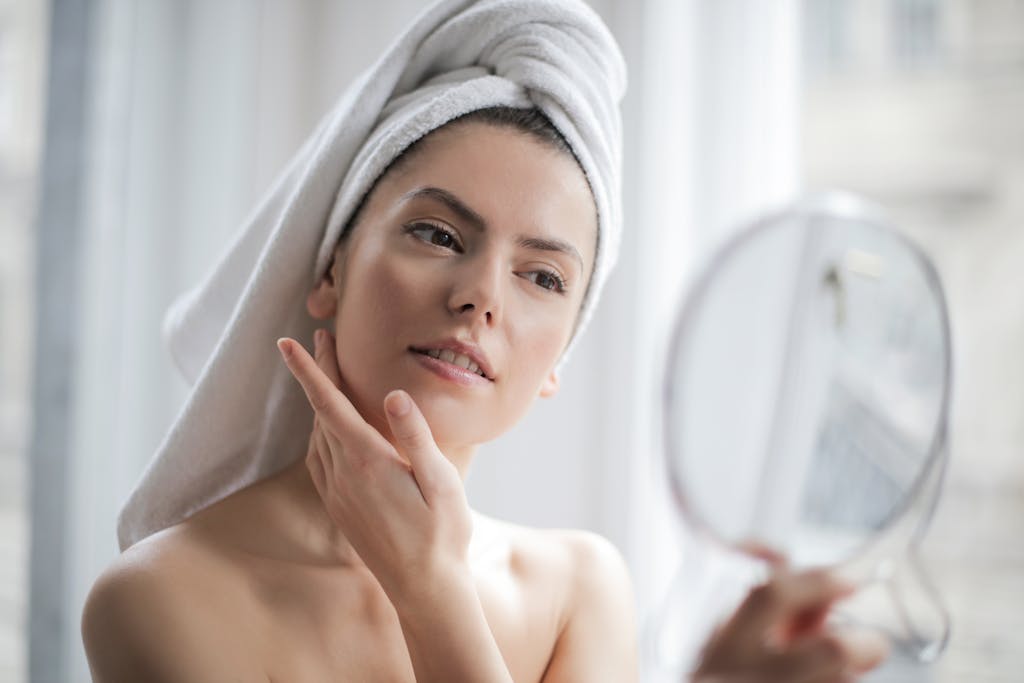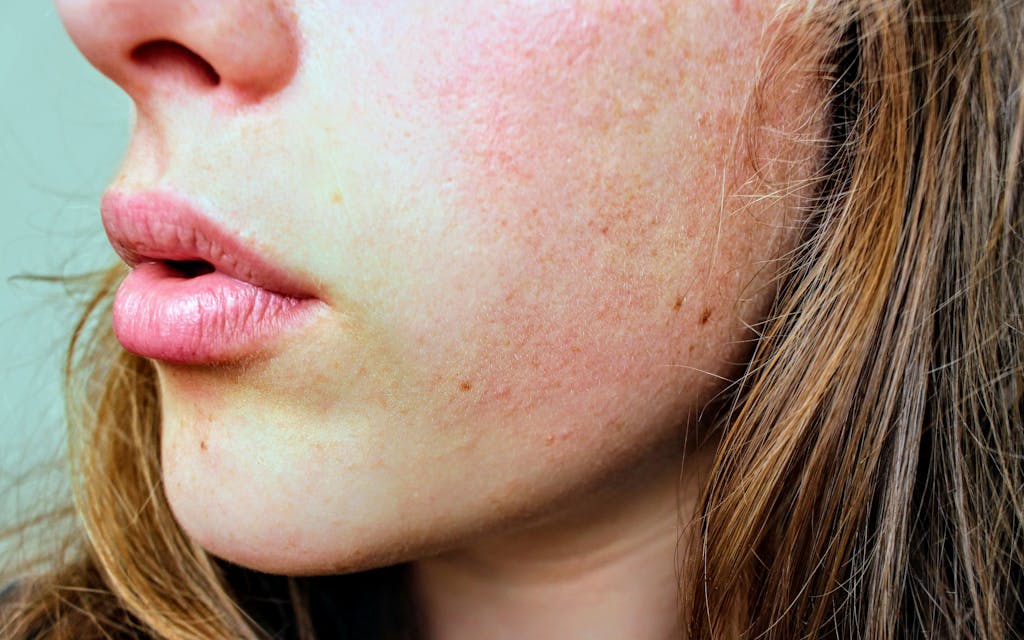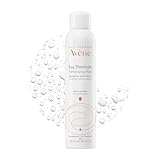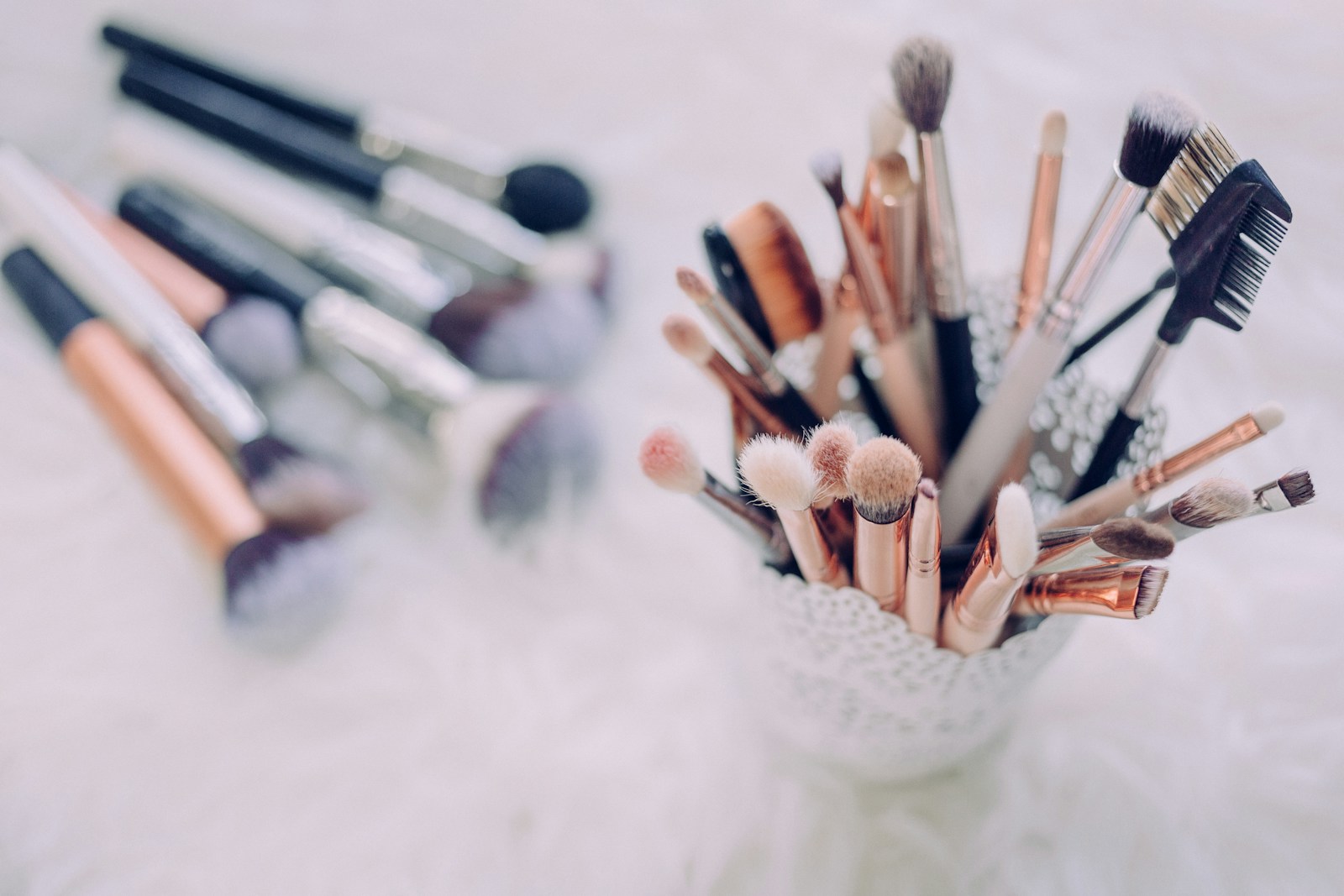
Non-toxic skincare is essential for sensitive skin, but it can feel like a minefield. One wrong product and hello redness, burning, or breakouts. If you’re tired of reacting to “gentle” products loaded with mystery chemicals, you’re not alone. Many cleansers or creams labeled for sensitive skin still contain synthetic fragrances, harsh preservatives, or other irritants that trigger flare-ups. That’s why embracing a natural, non-toxic skincare routine can be life saving. By “non-toxic,” we mean products with zero synthetic ingredients (no artificial dyes, fragrances, petrochemicals, or harsh additives).
Before We Get Started…
If you’re 18–24, this is your chance to get all the best Prime perks at half the price with Amazon Prime for Young Adults.
Eligible ages: 18–24. Membership continues after trial at 50% off standard Prime.
Not 18–24?
You can still get all the savings and benefits of a standard Prime membership.
Includes fast, free delivery, Prime Video, exclusive deals, and more.
Why Sensitive Skin Needs a Non-Toxic Skincare Routine
Sensitive skin is often a symptom of a compromised skin barrier or underlying inflammation. Common causes include conditions like rosacea or eczema, allergies (contact dermatitis), or simply an inherent reactivity where skin over-responds to stimuli. The goal of a non-toxic skincare routine is to calm and strengthen your skin’s barrier using gentle, plant-based ingredients while avoiding known triggers. Think of it as minimalist skincare: fewer, better ingredients chosen for their soothing and protective properties.
Why Non-Toxic Skincare? Plant-derived ingredients tend to work with your skin, providing vitamins, fatty acids, and antioxidants without the side effects of synthetic chemicals. For example, botanicals like oat extract, calendula, and chamomile actively reduce inflammation and redness, while plant oils rich in ceramides help repair the moisture barrier. By eliminating toxins, we avoid burdening sensitive skin with potential allergens and endocrine disruptors. (Fun fact: The EU has banned over 1,300 cosmetic chemicals, while the US has banned only 11. Opting for truly natural products is a proactive way to stay safe!).
This post will guide you through a step-by-step non-toxic skincare routine for sensitive skin that actually works. From a gentle cleanser that won’t strip or sting, to an alcohol-free toner that hydrates, to a calming serum and an all-natural sunscreen, we’ve got you covered. I’ll share tips I’ve learned from experience and research (as a fellow sensitive-skin gal and non-toxic skincare nerd), so you can build a routine that leaves your face feeling comfortable, balanced, and glowing. Let’s dive in!

Next, we’ll break down the routine steps – morning and night – with specific product recommendations in each category. Feel free to mix-and-match based on your non-toxic skincare needs!
Step-by-Step Non-Toxic Skincare Routine for Sensitive Skin
Creating the best non-toxic skincare routine for sensitive skin means focusing on a few essential steps and doing them with the right products. Consistency is key. Sensitive skin loves a predictable routine (constant product hopping can lead to surprise reactions). Below is a simple morning and evening regimen. Each step includes why it’s important and how to do it in a gentle, natural way, plus product picks that are 100% free of synthetics.
Morning Routine: Calm & Protect 🌞
Your morning non-toxic skincare routine should be all about soothing hydration and protection for the day ahead. After a night of skin repair, the goal is to refresh without over-cleansing, then layer lightweight moisture and shield skin from UV and environmental stress.
Gentle Cleanse (or Simply Rinse)
Skip harsh soaps in the AM. Many dermatologists agree you may not need a foamy cleanse in the morning if you cleansed the night before. Over-cleansing can strip natural oils and disrupt your skin barrier. Instead, try rinsing with cool or lukewarm water or using a very mild cleanser. The cool water trick helps constrict pores slightly and reduce any morning puffiness (bonus: it feels refreshing!). If you need a cleanser (e.g. if you’re oily or wore heavy night cream): choose a pH-balanced, sulfate-free formula that won’t leave skin feeling tight. Recommended Morning Cleansers:
Honey Girl Organics Facial Cleanser
A USDA Certified Organic cleanser made with honey, propolis, and olive oil. It softly cleanses while depositing healing nutrients. Honey is a natural humectant (draws moisture) and antimicrobial, great for redness or breakouts. Only natural ingredients. It leaves skin clean but comfortably hydrated.
Farmstead Apothecary Foaming Face Wash
A plant-based face wash featuring organic jojoba and coconut oil. Jojoba helps regulate oil and keeps skin soft while the light foam lifts. Formulated with minimal ingredients to minimize irritation risk. As Farmstead says, “minimal, simple, purposeful, and effective” for sensitive skin. Plus, it’s vegan, cruelty-free, and made in the USA.
Hydrating Toner or Mist
After cleansing (or water-rinsing), soothe your skin with a hydrating toner. The right toner for sensitive skin is alcohol-free, fragrance-free, and packed with calming plant waters or extracts. Toning restores skin’s pH balance and adds a weightless layer of moisture, which helps your serum/moisturizer absorb better. You can either spritz it on and let skin drink it up, or pat on with clean hands. Recommended Toners:
Heritage Store Rosewater Spray
A classic, minimal ingredient toner. Rosewater has natural anti-inflammatory properties to reduce redness and calm irritation. It’s as simple and gentle as it gets. A fine mist of soothing hydration and a light natural rose scent (no synthetic fragrance or alcohol) to perk up your morning.
Leven Rose Witch Hazel Alcohol Free Toner
A gentle, alcohol-free toner made for sensitive skin. This formula blends rosewater with calendula, cucumber, chamomile, and witch hazel, soothing botanicals known for calming inflammation and reducing redness. It’s 100% natural and free from synthetic preservatives, using plant distillates to tone and hydrate without drying. If your skin feels tight after cleansing or flares up easily, this toner helps reset and rebalance.
Serum or Treatment (Antioxidant/Calming)
This step is your chance to apply a targeted serum that addresses sensitive skin concerns. In the morning, we recommend an antioxidant serum (to protect and strengthen) or a calming serum (to reduce any lingering redness or irritation). A vitamin C serum is popular in the AM for its glow-boosting, spot-fading power, but many vitamin C formulas use synthetic stabilizers or have too high acid concentration for sensitive folks. Instead, consider gentler, natural antioxidant sources or derivatives. Recommended Morning Serum:
Pai Skincare “Rosehip BioRegenerate Oil”
A cult-favorite organic facial oil that functions as a serum. It’s rich in rosehip seed & fruit oil, which are packed with natural vitamin C, vitamin A, and essential fatty acids. This oil-serum helps brighten the skin gently, fade scars or redness over time, and boost overall resilience. Rosehip oil is non-comedogenic and anti-inflammatory, known to calm rosacea and rebuild damaged barrier. Pai’s formula is super pure (certified organic, no additives) and was literally developed for reactive skin. Use 2-3 drops on damp skin (after toner) so it spreads easily.
Moisturizer
Lock in all that hydration with a nourishing moisturizer. During the day, opt for a lightweight cream or lotion (heavier occlusives can be saved for nighttime). The moisturizer’s job is to seal in moisture and strengthen your skin barrier without clogging pores. For sensitive skin, look for creams high in ceramides, squalane, or fatty acids from natural oils. These help patch up the tiny cracks in a damaged barrier. And of course, free of synthetic emulsifiers or perfumes that could irritate. Recommended Day Moisturizer:
Honey Girl Organics Face & Eye Cream
This is an all-in-one rich cream for face and eyes, made in Hawaii with 100% organic ingredients like raw honey, beeswax, and olive oil. It has zero essential oils or added scents (great if you even react to natural fragrances). It’s deeply moisturizing and protective. You can thank the beeswax which forms a breathable barrier to prevent water loss. Despite being rich, it’s designed for sensitive skin so it won’t clog pores. In fact, many users with eczema or ultra-dry sensitive skin swear by this cream for calming flare-ups. During the day, apply a small amount (pea-sized) and it will keep you soft all day. Bonus: doubles as an eye cream so you don’t need a separate product.
Sun Protection
This is a non-negotiable final step every morning, year-round. UV exposure can worsen sensitivity (redness, inflammation, hyperpigmentation) and of course, leads to premature aging. We’ll use a 100% mineral sunscreen because chemical sunscreens (avobenzone, octinoxate, etc.) can be irritating to sensitive skin and are not “natural” by our definition. Mineral sunscreens use zinc oxide, a physical mineral that sits on skin’s surface to reflect UV rays. The key is to find one that is non-nano (safer, doesn’t penetrate skin) and ideally combined with a moisturizing base so it won’t dry you out. Recommended Natural Sunscreens:
Raw Element Ultra-Moisturizing Tinted Face Cream
A true multitasker for sensitive skin. This mineral sunscreen doubles as a lightweight daily moisturizer, thanks to a nourishing base of organic green tea, black tea, and sunflower oil. The active ingredient is non-nano zinc oxide (23%), which provides broad-spectrum protection without chemical filters. It goes on smooth, absorbs well, and doesn’t leave a sticky film or strong scent. It’s reef-safe, made with food-grade ingredients, and won’t irritate even delicate skin.
Waxhead Tinted Facial Sunscreen SPF 31
A great option if you want sun protection and a little coverage. This mineral sunscreen is tinted with iron oxides and uses 25% non-nano zinc oxide as its only active ingredient. The texture is creamy but breathable, and the tint helps even out redness or blotchiness without makeup. No synthetic fragrances, preservatives, or parabens, just natural oils and antioxidants like jojoba oil, shea butter, and vitamin E. It’s also water-resistant and designed to stay put, so it won’t run or sting if you sweat. Bonus: the subtle tint means no white cast, even on medium to deeper skin tones.
That’s it for the morning! Give your skin a few minutes after applying sunscreen before putting on makeup (if you wear any) to let everything settle. Your face is now cleansed, hydrated, nourished, and protected naturally. 🌿
Evening Routine: Soothe & Repair 🌙
Your nighttime natural skincare routine is all about deep cleansing (to remove the day gently), then maximal nourishment and repair while you sleep. Skin does its heavy lifting at night. Cell turnover and regeneration peak during sleep, so we’ll provide the best environment for that. For sensitive skin, the focus at night is to thoroughly clean without stripping, then layer restorative products that help your barrier recover and redness calm down.
Makeup Removal/Cleansing
If you wear makeup or sunscreen, proper cleansing at night is crucial. However, scrubbing your face or using a harsh foaming cleanser can do more harm than good. Surprisingly, oil cleansing can be fantastic for sensitive skin. Like dissolves like, so oils can lift off debris without detergents, and it leaves the skin’s lipid barrier intact. Just be sure to choose a simple, natural oil cleanser (no mineral oil, no synthetic fragrance). Recommended Night Cleansers:
PAI SKINCARE – Light Work Organic Rosehip Cleansing Oil
This is a gentle cleanse made for reactive skin. It melts away sunscreen and makeup with organic rosehip oil, castor oil, and olive fruit extract, without leaving behind residue or irritation. Sensitive skin often struggles with makeup removal. This oil lifts everything off without rubbing or stinging, and rinses clean with water. The formula is fragrance-free and packed with antioxidants to support your skin barrier, not strip it.
Optional: Mild Exfoliation (1-2x a week)
Once or twice a week at most, in the evening. Exfoliation can be tricky for sensitive skin. You want to slough off dead cells to prevent dullness and clogged pores, but over-exfoliating will inflame and weaken your skin. We recommend very gentle, natural exfoliants and only occasionally. Options include: enzyme masks (fruit enzymes that dissolve dead skin without scrubbing) or very fine, natural scrubs (like oatmeal or rice powder). Avoid anything with rough beads, sugar, salt, or high concentrations of glycolic/lactic acid unless your skin tolerates acids well. Another great option is a muslin cloth or konjac sponge used with your cleanser for light physical exfoliation. Recommended Gentle Exfoliators:
Mahalo “The Petal” Mask
A splurge-worthy enzyme mask made with honey, fruit enzymes and floral extracts. You apply a thin layer and leave ~15 minutes. It gently loosens dead skin using natural enzymes from hibiscus, while honey reduces inflammation. It’s essentially a nourishing treatment that also exfoliates. Many users with sensitive or even allergic-prone skin find they can use this without irritation, emerging with softer, glowing skin. Plus, it smells like a tropical flower garden.
Colloidal Oatmeal DIY Scrub
For a budget-friendly, ultra-gentle scrub, you can make your own: take colloidal oatmeal (or finely ground oats) and mix with a bit of water (and honey if desired) to form a paste. Gently massage on damp skin for 30 seconds and rinse. Oatmeal is proven to be anti-inflammatory and is often used in eczema treatments. The tiny particles provide very gentle manual exfoliation and also deposit beta-glucans that soothe the skin. This is about as safe as it gets. You’re just using a single, edible ingredient. It leaves skin calm and smooth.
Toner (Hydrating/Calming)
After cleansing at night, use the same gentle toner or mist as in the morning to flood your skin with a bit of lightweight hydration. This also preps your skin to better absorb the heavier treatments to follow. Pat it in and feel your skin thank you. (You can reuse your morning toner pick here. Alternatively, if you prefer something different at night:)
Eau Thermale Avène Thermal Spring Water Spray
This is literally just thermal spring water in a can, rich in minerals and silica, known for soothing inflammation. It’s a derm favorite for reactive skin (often used post-laser or for eczema). A few cooling spritzes can calm redness after cleansing.
Night Serum or Treatment
At night, your skin goes into repair mode. This is the best time to apply targeted treatments that support healing, reduce inflammation, and strengthen the skin barrier. A good night serum can help restore moisture, calm irritation, and protect against damage from the day. If your skin is sensitive, skip harsh actives and reach for barrier-friendly ingredients. Natural oils rich in omega fatty acids are great for hydration and repair. Antioxidants like astaxanthin or vitamin E help neutralize free radicals and support long-term skin health. Recommended Night Treatments:
Maya Chia Super Naked, Plum + Chia Oil
A minimalist face oil that’s as calming as it is nourishing. This blend combines organic plum oil and chia seed oil, both rich in essential fatty acids and antioxidants, with absolutely no added fragrance or essential oils. Super Naked was made for sensitive skin that can’t handle complicated formulas. It helps restore moisture, soften dry patches, and support your skin barrier without causing redness or breakouts. The texture is lightweight but deeply hydrating. As an added benefit, it’s infused with astaxanthin, a powerful antioxidant that’s 65 times stronger than vitamin C in fighting free radical damage.
Moisturize & Seal
Finally, end with a slightly richer moisturizer or facial oil at night to lock in moisture and assist overnight repair. At bedtime, you can afford a heavier texture since it doesn’t matter if you look a little shiny. In fact, occlusive ingredients (that form a protective layer) are beneficial at night for sensitive skin; they prevent transepidermal water loss and keep irritants out. Natural occlusives include beeswax (in balms), shea butter, cocoa butter, and oils high in oleic acid (like avocado or macadamia). Recommended Night Moisturizers:
Pai Skincare “The Anthemis” Soothing Moisturizer
A cream specifically made for easily-upset skin, featuring chamomile and rosehip. Chamomile is included for its ability to calm redness and irritation. Rosehip helps regenerate skin overnight. This moisturizer has no common triggers. It’s rich enough to comfort dry sensitive skin at night but not pore-clogging. Users with rosacea often find it reduces their redness over time. Apply it as the last step; it absorbs nicely without a greasy feel, but leaves a protective layer.
Special Treatments (Occasional)
This isn’t every night, but a few times a week you might incorporate any special masks or spot treatments your skin needs:
Soothing Mask
When your skin feels hot, tight, or extra reactive, a honey-based mask can help bring it back to baseline. This one uses Melipona honey, known for its natural enzymes and antioxidants that calm inflammation and support healing. It’s hydrating, soothing, and especially helpful after sun exposure or during a flare-up. Honey is naturally antibacterial and anti-inflammatory, making it a great option for sensitive or breakout-prone skin. It’s sticky, but worth it.
Spot Treatment
For the odd pimple, avoid typical benzoyl peroxide or strong acids which can inflame surrounding skin. Instead, use a sulfur clay or zinc-based spot treatment. For example, Zinc oxide ointment (like diaper rash cream) dabbed on a pimple overnight reduces inflammation and size without irritating the skin around it. Or a dot of the Raw Elements sunscreen (since it’s 23% zinc) can double as a spot treatment in a pinch! These won’t necessarily obliterate a pimple as fast as a chemical would, but they also won’t leave you with a peeling burn.
Under-Eye Care
If you’re concerned about the eye area, the Honey Girl cream above might suffice. If you want a dedicated eye product, choose one with caffeine from natural sources (green tea or coffee extract) to depuff, and hydrating oils. 100% Pure Coffee Bean Eye Cream is a popular all-natural eye cream that smells like vanilla coffee and uses caffeine and green tea – great for morning or night to reduce puffiness without irritation.
And there you have it – your skin is pampered and prepped for a restful night of regeneration. Always remember: Less is more for sensitive skin. You might notice we didn’t include 12 different serums or fancy gadgets. Keeping the routine streamlined helps you pinpoint what works and avoids overwhelming your skin with too much at once.
Tips for Sensitive Skin Success
Patch Test New Products
This cannot be overstated. Whenever you introduce a new product (even the ones recommended above), patch test first. Apply a small amount on an inconspicuous area of skin like behind your ear or on your inner forearm. Wait 24-48 hours to see if any reaction occurs (redness, itch, bumps). It’s a little extra effort up front, but it can save your face from a full-blown reaction. Especially do this for potent products like serums or masks.
One Change at a Time
If you’re overhauling your routine to be more natural, resist the urge to start five new products at once. Introduce one new product per week. For example, swap your cleanser first and use it for a week to ensure it agrees with you. Then add the new toner the next week, and so on. This way, if something does irritate you, you can easily identify the culprit.
Mind the Ingredients
Get in the habit of reading ingredient labels. Look out for common irritants that often sneak into skincare, even “clean” ones. These include synthetic fragrance/parfum, essential oils in high concentrations (tea tree, peppermint, citrus oils can be too potent, though in low amounts or formulations they may be okay), alcohol denat. (denatured alcohol dries and can cause flare-ups), and even natural ingredients your skin personally dislikes. For instance, some sensitive individuals can’t handle witch hazel or even too much niacinamide (causes flushing in some). Knowing your triggers is power. Keep a skin diary if needed – note when you react and check what ingredients might be responsible
Skip the Scents
While we all love nice-smelling skincare, fragrance (both synthetic and natural essential oils) is a top cause of contact dermatitis. If your skin is extremely reactive, it’s safest to choose unscented or naturally unscented products. Many of the recommendations above are available in unscented versions (Honey Girl has an “Extra Sensitive” line with no added EO). If you miss scent, you can always add a tiny drop of lavender hydrosol to your toner or just diffuse oils in your room.
Temperature Matters
When cleansing or rinsing, use cool to lukewarm water. Hot water can aggravate redness and strip oils, whereas very cold water (while refreshing) can sometimes cause a temporary reactive flush. Aim for a comfortable medium. Slightly cool is great to depuff in morning, lukewarm at night to help cleanse effectively. Also, try to avoid extreme temperatures in general. Long hot showers or saunas might trigger sensitive skin episodes (if you have rosacea, heat is a known trigger).
Pat, Don’t Rub
Treat your face like fine silk. When drying with a towel, pat gently instead of rubbing vigorously. Rubbing can cause micro-irritation and redness. Similarly, when applying products, you can press or pat them into the skin rather than vigorously massaging (unless it’s during cleansing where you need a bit of motion). This gentle application reduces friction and risk of irritation.
Barrier Boosters
Consider incorporating a humidifier in your bedroom if you live in a dry climate or use indoor heating. Keeping ambient humidity around 40-50% can dramatically help your skin retain moisture overnight, leading to a calmer complexion in the morning. Also, use silk pillowcases. They are less abrasive than cotton and won’t absorb your precious night oils and creams as much. Silk can also help with morning redness since it reduces the friction on your face while you sleep.
Diet & Lifestyle
Sensitive skin is often influenced from the inside out. Stay hydrated and eat skin-friendly foods rich in Omega-3 fatty acids (flaxseeds, walnuts, wild salmon) which can reduce inflammation. Some people find that reducing alcohol and spicy foods lessens facial flushing (especially for rosacea types). And of course, manage stress. Easier said than done, but stress hormones can trigger sensitivity and flare-ups. Gentle practices like chamomile tea at night, magnesium, or mindfulness exercises can indirectly benefit your skin.
With these tips, you’re not only caring for your skin now but also teaching it to become stronger and less reactive over time. The mantra here is “gentle consistency.” Over a few weeks, you should notice fewer surprise reactions, a more even tone (less blotchiness), and improved texture. Many who switch to a natural skincare routine report that their skin’s tolerance actually improves because the skin barrier is healthy and intact.
Product Round-Up: 19 Best Non-Toxic Skincare Products for Sensitive Skin
Throughout the routine above, we’ve recommended specific products in each category. Here we consolidate an easy-reference round-up of 100% non-toxic, sensitive-safe products that you can mix and match in your routine. Each one is chosen for its clean ingredient list and gentle effectiveness:
(The above non-toxic skincare products are all available online, and many in health stores. Always double-check ingredient lists if you have specific allergies. Remember, “natural” products can still have allergens, so know your triggers.)
This product round-up covers each major step of a non-toxic skincare routine. You can confidently pick one from each category (cleanser, toner, serum, moisturizer, sunscreen) and know that they’re designed to be as gentle as possible. All the recommendations avoid the usual “do not use” list for sensitive skin – no synthetic fragrances, no harsh sulfates, no parabens, and no known irritants in significant amounts. They prove that you can have natural skincare that is also effective.


Non-Toxic Skincare Questions Answered
Navigating skincare with sensitive skin can be challenging, but a natural, non-toxic skincare routine offers a gentle path to a healthy complexion. By choosing products that are free from harsh chemicals and full of soothing botanicals, you respect your skin’s delicate balance.
As we’ve outlined, the best non-toxic skincare routine for sensitive skin focuses on calming and protecting the skin barrier above all. It may require a bit of trial and error to find your perfect product lineup, but hopefully our recommendations and tips light the way.
Stick with it, stay consistent, and treat your skin with kindness. Soon, instead of saying “ugh, my skin is so sensitive,” you might find yourself saying, “wow, my skin is so soft and calm!” Here’s to happy, healthy skin days ahead. 🌺🧖♀️
join the newsletter
Want more non-toxic guides? Subscribe today.










































